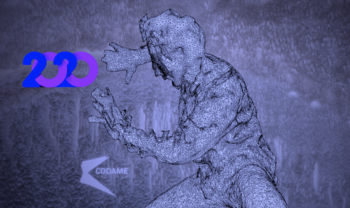“Art style follows something that exists. When you use an art form that already exists, its art style. But when you invent a new way to depict an image, its art movement.” - Paula Popescu
“When works of art exhibit common visual characteristics, they may be said to belong to an artistic style. When a group of artists tend toward or immerse themselves in a particular style based on common goals or philosophies, this can be called a movement.” - Michael Kodysz
Shifting the primary focus in creating a work of art from the pigmented paints used in rendering a painting, to becoming more aware of the optics involved of light interacting with structures within a painting, presents an opportunity to advance the age old art of painting in directions that have not been fully explored.

The most historically exciting development in the understanding of the creation of colors has happened here in the last 50 years. With the advent of the electron microscope in the late 1960’s we for the first time began to unlock the physics behind the mysteries of Structural Color.
In nature there are numerous examples of these colors that until recently defied our attempts to mimic. Select hummingbird feathers, butterfly wings, beetle shells, and even the simple soap bubble all generate colors structurally. These effects that we perceive as having such intense beautiful colors are diffraction of light rays. Particle sizes too small even for a microscope to image underlie the creation of this optical color effect. The very surfaces of these objects are latticed with precisely spaced tiny 3 dimensional structures that redirect the light rays to create brilliantly diffracted colors. These colors are thus optically generated and not made from pigments as we have come to expect in creation of color.

Since the earliest recorded history of humans making colors in art, tracing back 30,000 to 40,000 years, to this very moment in history, colors have been achieved from grinding material of one kind or another to extract their desired properties.
Today’s photonics nano particle research in physics enables new abilities to mimic and create Structural Color materials that have never, in all of prior human history, been possible to achieve. We see this in security features on our currencies, in true holograms, and in an array of other thin film materials.
An optical based approach to painting also lends itself to new substrates. Aluminum panels provide an opportunity to control the reflection of light off the surface of the metal. How light enters and exits the picture plane and at what directions these beams of light are directed becomes an integral aspect to building an image. Studies into aspects of the physics of standing wave front patterning inform how carefully conceived etching can be made to evoke a stereoscopic 3 dimensional visual effect. What is being evoked in these ways is related to some of the fundamental underlying wave front principles in Holography.

Advancements in photonics physics and material science are being reimagined to inform new possible approaches to art making. Increasingly assembling diffractive materials and processes become the primary means to creating an image in this approach to painting.
Principals inherent to the fundamental dual particle and wave nature of light and the ability to manipulate the course of light entering and exciting the picture plane underlies everything in this approach to image making.
“The feat, achieved by observing the interference of two intersecting light beams, is an important insight into the fundamental quantum nature of light.”
“One thing you can count on is a steady stream of innovation that will likely lead to new movements. This always happens when you get crossover talents - people who are experts in one thing then apply it to another.”





